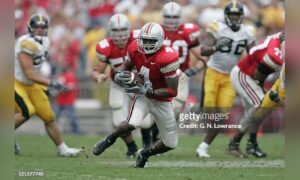After two straight seasons of equivalent wins and losses, it’s certainly no surprise that the front office of the Pittsburgh Steelers has been busier and more active than usual in their efforts to reshape a middling roster into a true competitor.
The past few months could be fairly described as a season of change amid the shifting fates of a franchise that had just been to the Super Bowl three times in the very recent past. It may well be that past success that has helped drag them down of late.
Of course, selecting late in the draft annually doesn’t help, nor do the big contracts going out to the players that helped you reach that success. But the true death knell has been an unwillingness to recognize when to let go.
The Steelers had hoped to hold together that championship core for a while longer, but the last two seasons have been the wake-up call necessary to introduce the wave of change that we’ve seen this offseason, designed to steer the organization back in the right direction.
The Steelers, track record in the first round under Kevin Colbert has been about as good as any team in the league, especially when considering that their selections have frequently come in the back third of the draft.
There’s really not a player that you could fairly describe as a bust in the group. The Steelers went on to trade Santonio Holmes, but that was following a Super Bowl MVP performance, and he put in some good years during his stay in Pittsburgh.
Perhaps the closest thing that could come to matching the term would be their 2009 first-round selection, Ziggy Hood, though even in that instance it wouldn’t be fair. It’s true that they let him walk once he hit free agency with no apparent resistance, but he put in many solid hours on defense over the years, and was a motivating factor in the gym.
The truth is that the Steelers’ letting him walk was an acknowledgement of a misidentification, not necessarily of talent, but of schematics.
Hood’s body type and skill set did not lend itself naturally to playing a 3-4 defensive end. His athleticism and work ethic alone were responsible for the success that he did manage to achieve with the Steelers.
Which is why the Jacksonville Jaguars, a 4-3 team, signed him to a four-year, $16 million contract to play defensive tackle in their system, where perhaps we will get a better glimpse of what he’s capable of.
Perhaps the Steelers reached a bit when they chose to draft Hood. Perhaps it was even a bit presumptuous, if not arrogant. It was clearly a pick designed for the future, and certainly not the best player available, at least in hindsight.
The Steelers thought that they could draft for luxury, stashing Hood to wait in the wings for the last couple seasons of Aaron Smith’s career, so that they can have a seamless transition. The problem with that, of course, is that they wound up drafting a successor that wasn’t an appropriate fit for the job.
Even though the contract that Hood went on to sign would have been prohibitive anyway, the virtually complete lack of interest from the Steelers of retaining him certainly strongly indicates an acknowledgement from the coaches and the front office that it was time to recognize the issue and move on, having gotten their five years of service along the way.







